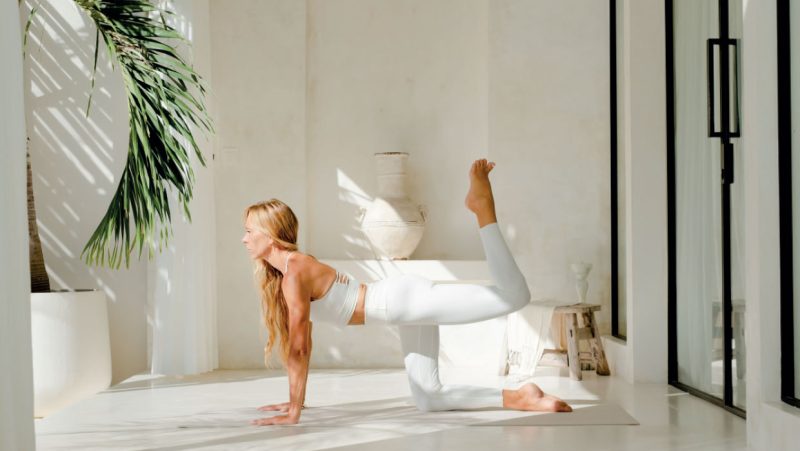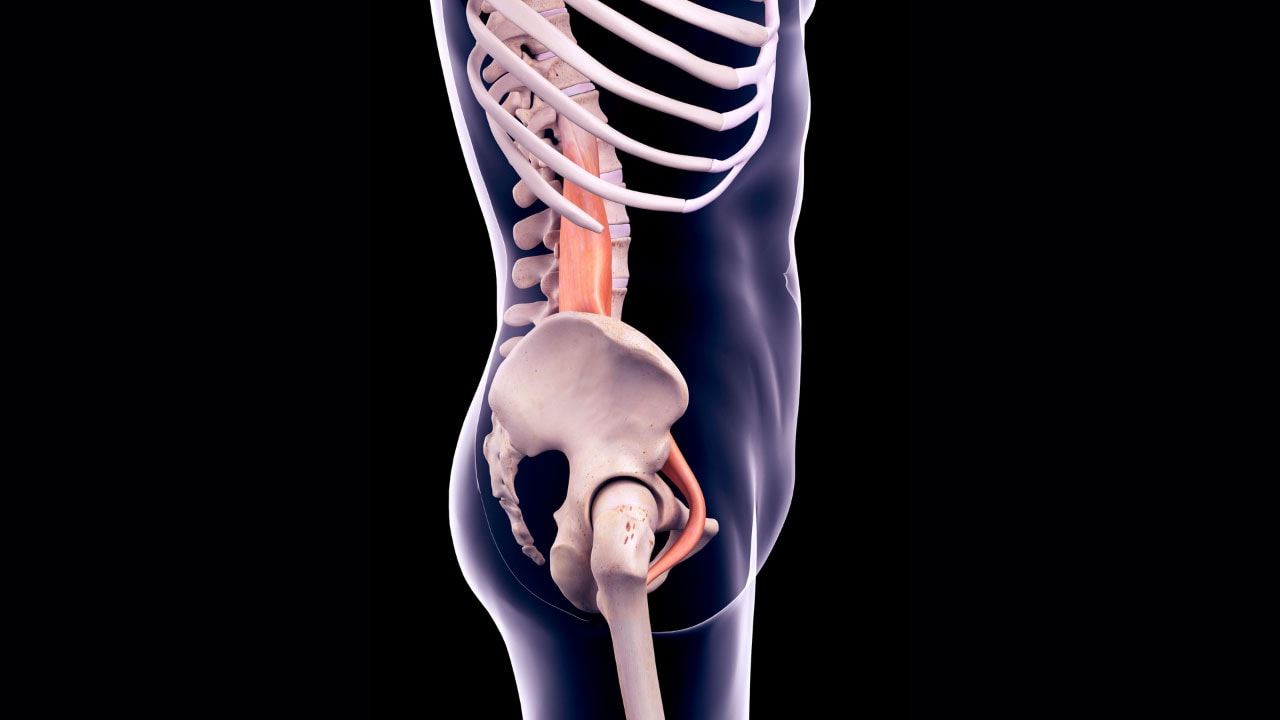
The psoas muscle and our stress response
The psoas muscle: tips for stretching and strengthening, resting and relaxing. By Fenella Lindsell
If you are a yoga teacher, you will certainly appreciate the importance of the iliopsoas muscle, also known as the psoas.
If you are not a teacher, then you may well have heard of this large muscle that runs from the hip to the lumbar spine insertion and takes charge of back flexion and extension as well as hip flexion.
The following discussion will explain and analyse the link between the psoas muscle and the human fight or flight response.
In addition, some tips will be outlined for stretching, strengthening and relaxing the muscle with the ubiquitous outcome of a healthier quality of life and lower stress.
Movement
Primarily, the psoas muscle relates to bodily movement in the spine, hip and legs. The psoas is the deepest core muscle and connects from the mid-lower spine (12th thoracic vertebrae to the 5th lumbar vertebrae) and from here, it travels down through the hip and lastly to the femur.
The psoas is the only muscle that connects the spine to the legs and without it, we wouldn’t be able to bend over, lift our legs or keep our back from flopping over, not to mention its important connection to the diaphragm and breath.
Further, it has particular importance for stabilising the lower back, so when the muscle is overworked or unusually tight, the lower back has to take on more labour in its own muscles to keep the back stable.
Here is made evident the close link between the psoas and lower back problems.
Psoas health
Stretching, despite the idealised imaginations of some aspiring yogis, sadly doesn’t solve everything. It is important to know how the health of your psoas muscle is because this indicates whether it needs strengthening, stretching, relaxing or releasing.
For a tight and tense psoas muscle, stretching will offer some relief. It’s worth trying some poses like:
Parsva Sukirandasana (Eye of the Needle Twist): Left side psoas stretch
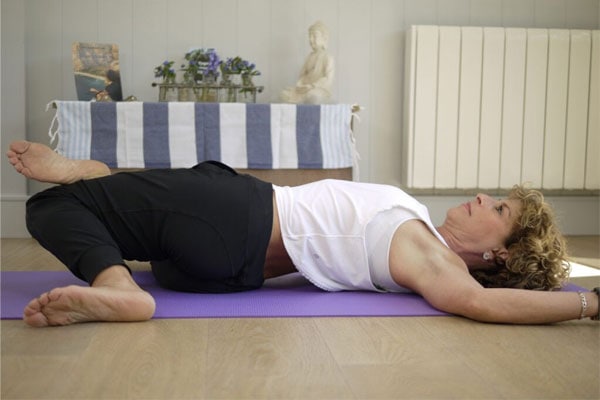
Eke Padasana (Standing Split): Left side psoas stretch
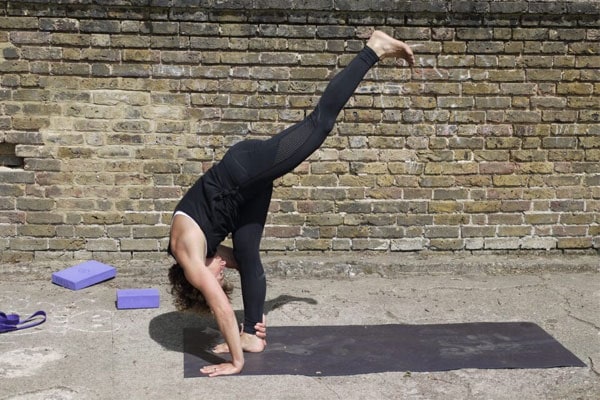
Anjaneyasana (Low Lunge): Lenghtening left psoas muscle
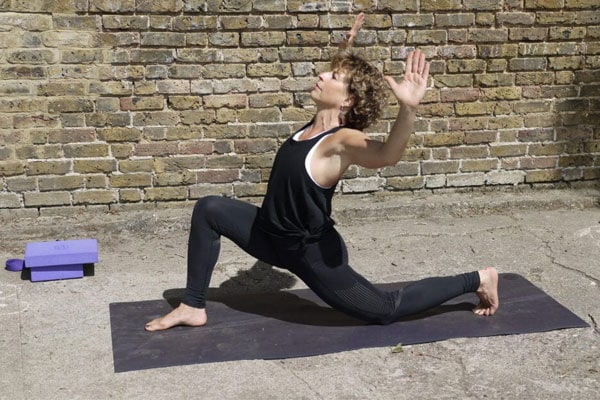
For a weak psoas, strengthening is needed and will increase stability in the back and hips.
Some exercises for increasing psoas strength include:
Parsva Parsvakonasana (Revolved Side Angle Pose): Contracting right psoas muscle.
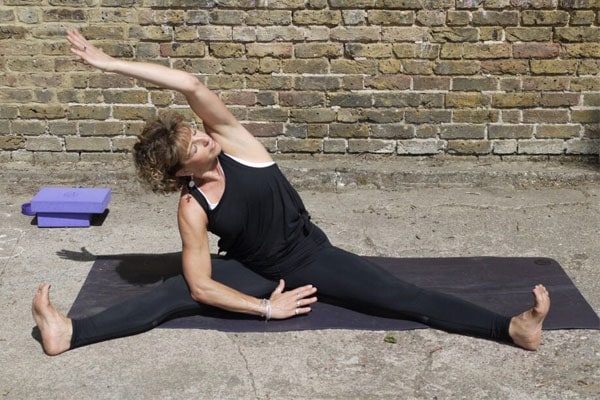
Parsva Dandasana (Revolved Staff Pose): Contracting right psoas muscle.
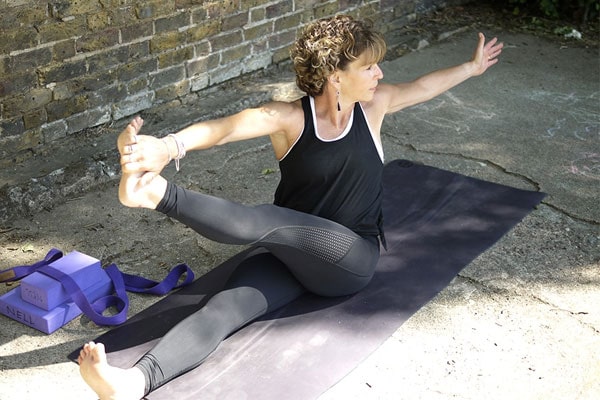
Parivrrta Upavista Konasana (Lateral Stretch in Wide Legged Forward Bend): Right psoas muscle.
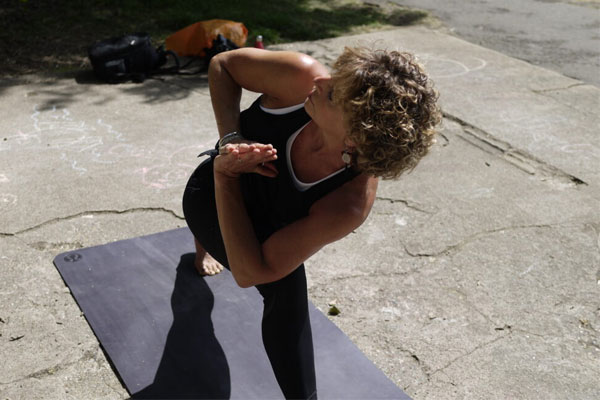
This means reducing movement and engaging in resting positions that have both physical and mental benefits. A good starting point may be:
Constructive rest position/Semi Supine
Constructive rest position combined with deep breathing
Psoas and stress
Our body has two main functioning modes:
Rest and Digest (parasympathetic nervous system)
Fight or Flight (sympathetic nervous system).
These executive operating systems divide our restful bodily actions and feelings from our excited and alert bodily actions and feelings. Interestingly, the psoas is the main muscle that is involved in the fight or flight response, the sympathetic nervous system. This means that when we are faced with a stressful scenario, the psoas muscle responds by tensing, thus shortening, in preparation for the body to run or fight. This is useful in emergencies when we need to act fast and create explosive movements.
Lower Back: However, when we are exposed to slight, consistent stress known as chronic stress (from work, relationships or illness) this can lead to a tight and contracted psoas muscle for days and weeks at a time as the body deals with the repeated stressors. When the psoas tightens, the back hunches, shoulders round and posture becomes weak. As this state continues, it leads to proliferated problems in the back, particularly the lower back. This is problem number one.
Breathing: The second issue that arises from consistent stress and affecting the psoas is that it reduces our quality of breathing. The psoas connects to the diaphragm through the fascia (small muscle fibres) and the medial arcuate ligament. The psoas is tight, as it is from stress, and this can draw the ribcage down and forward leading to shallow chest breathing, shorter breath lengths and reduced parasympathetic stimulation (restfulness). If the psoas is tight for extended periods without direct stress, perhaps due to hunching over a laptop, or through poor posture, this can activate the fight or flight response, encouraging the release of stress hormones and subsequent poorer breathing and increasingly bad posture and back problems. There we have problem number two.
Look after your psoas!
So the key message is look after your psoas!
When the psoas is strong and unstrained, deeper breathing is physiologically easier. With deeper, elongated exhales comes stimulation of the vagus nerve which promotes rest and relaxation in the body as the chest is less restrained.
Additionally, the back has more upright support and we stoop over less and avoid falling into a chronic fight or flight state, thus lowering our stress hormone levels and alleviating feelings of anxiety.





